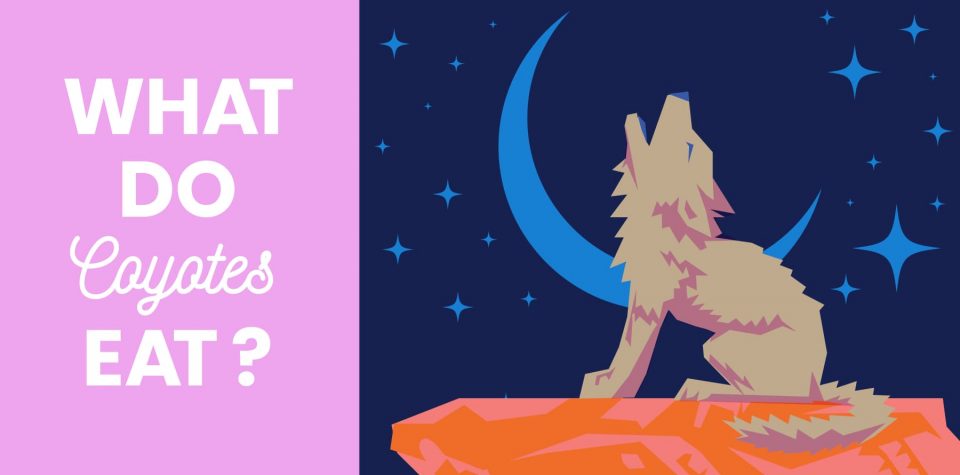
What Do Coyotes Eat?
Coyotes are adaptable eaters, munching on everything from garbage in cities to cactus fruit in the desert. They are omnivores like humans, which means they’ll eat just about anything and change their diet based on what’s available. Coyotes do prefer eating meat, and in the wild they mostly eat small animals like mice, chipmunks, squirrels, and rabbits. They also eat insects like grasshoppers and beetles, as well as a variety of fruits.
Scientists are less certain what coyotes eat in suburban and urban areas where lots of humans live. And the reason has to do with the lack of clues human food leaves in coyote poop.
Coyote Poop
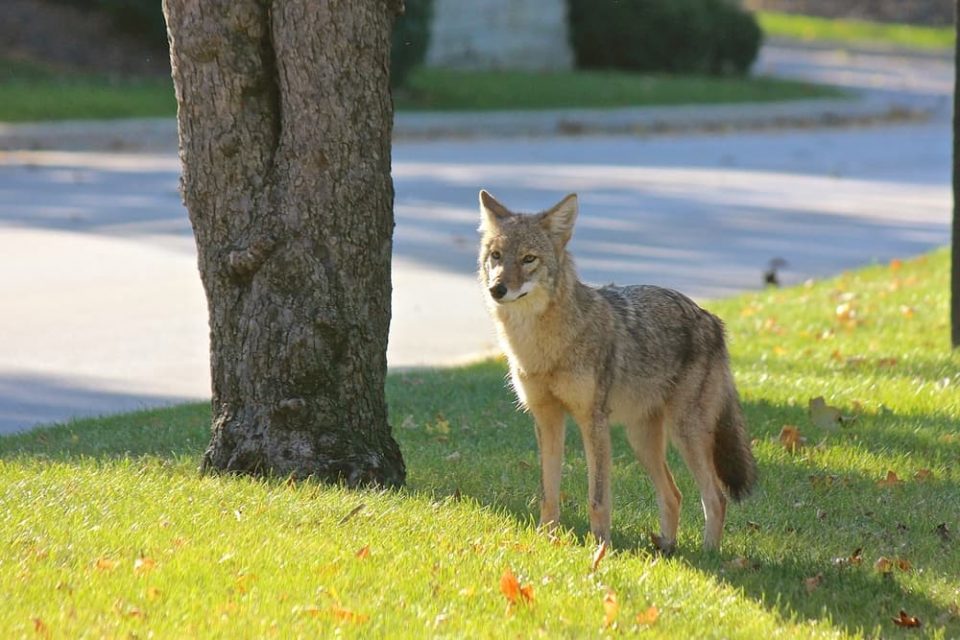
Coyote poop tells scientists a lot about what coyotes eat, because lots of the animals’ food ends up preserved in their droppings (which scientists call scat). In wild areas, coyote poop contains the bones of small mammals, seeds and husks from fruit, and insect exoskeletons, among other things.
Scientists know that urban and suburban coyotes sometimes eat human food based on what they find in coyote scat. But most human food is so easy to digest that very little of it ends up in the poop of coyotes that eat it, which makes it hard to figure out exactly how much garbage urban and suburban coyotes eat. One study in Los Angeles found fast food wrappers in one out of five samples of urban coyote poop, but it also found that those coyotes ate a similar amount of ornamental fruit out of people’s yards!
Why Do Coyotes Howl?
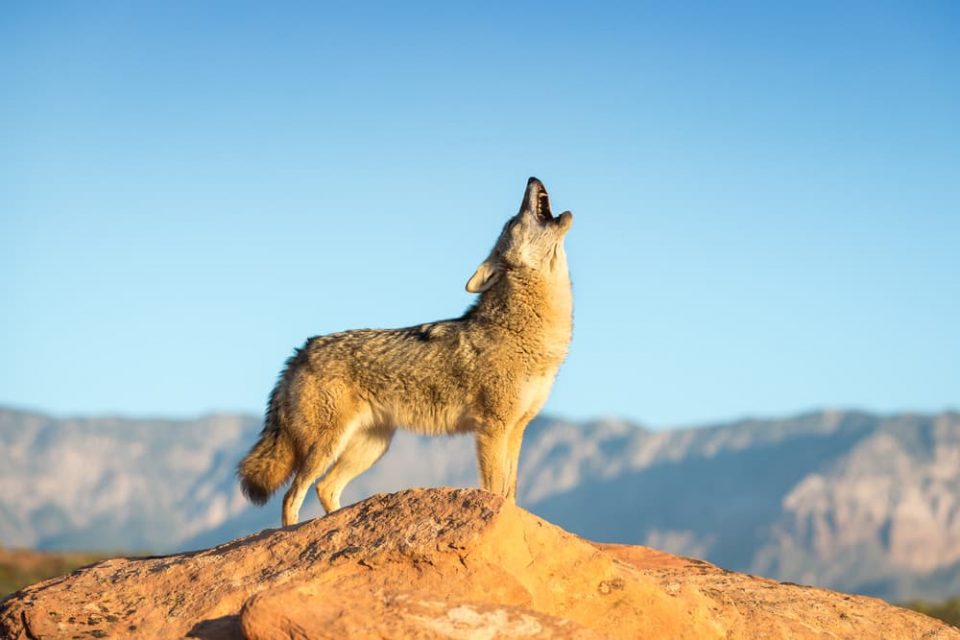
Coyotes howl when they have something to tell another coyote over a distance. Often, that message is “I’m over here, and everybody else better stay out of my territory.” Other times it’s “Where is my family? I can’t find you,” or “Let’s sing, family, and tell everyone else we’re here!” When coyotes howl in groups, they’re usually led by a male and female, with their children (either pups or adult children) and subordinate coyotes in the pack joining in.
Many people think coyotes howl when they kill something, but scientists think that’s rare. Think about dogs, a close coyote relative—two dogs are likely to make a lot of noise when they encounter each other, especially if they don’t know each other. They’re much less likely to do it when they’re chasing a squirrel! Coyotes do sometimes howl when they’re defending something they’ve killed, or when a lone hunter returns to the rest of the pack.
Coyotes also probably don’t howl at the moon. Humans are just more likely to hear them howling when the moon is up because coyotes are most active at night. And coyotes make a lot of sounds other than just howling. They growl, bark, and yip. Scientists are still figuring out what all those sounds mean, but they add up to a complex coyote language!
Are Coyotes Dangerous?
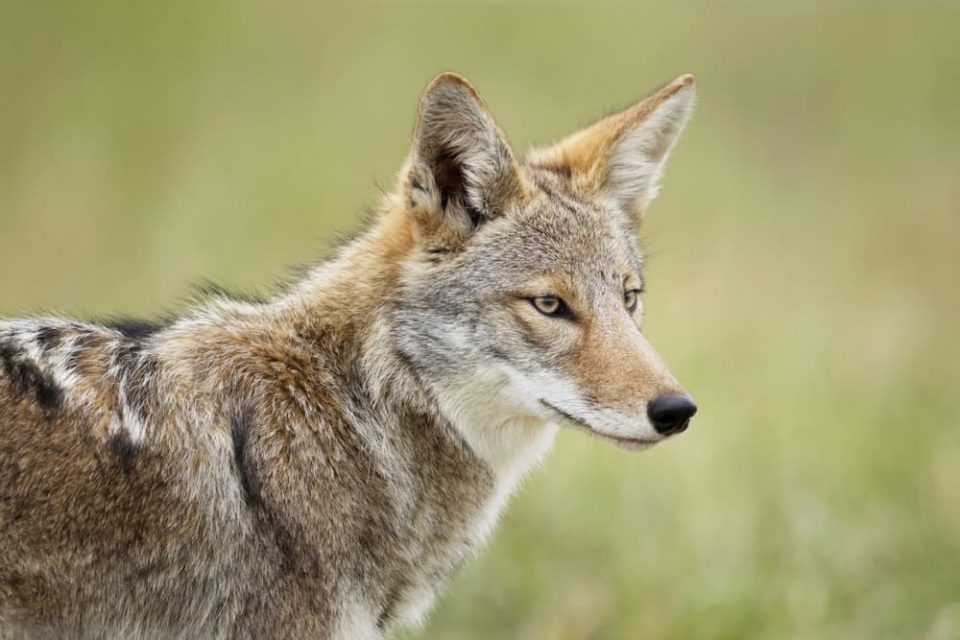
Coyotes rarely attack people, but experts advise that people should treat them the way they would any other wild animal. And coyotes can be dangerous to pets. Cats and small dogs look a lot like the animals coyotes eat in the wild. If you live in or are visiting an area with coyotes, keep a close eye on your pets while they’re outside, use leashes to keep them close to you, or keep them indoors, especially at night.
How Fast Can a Coyote Run?
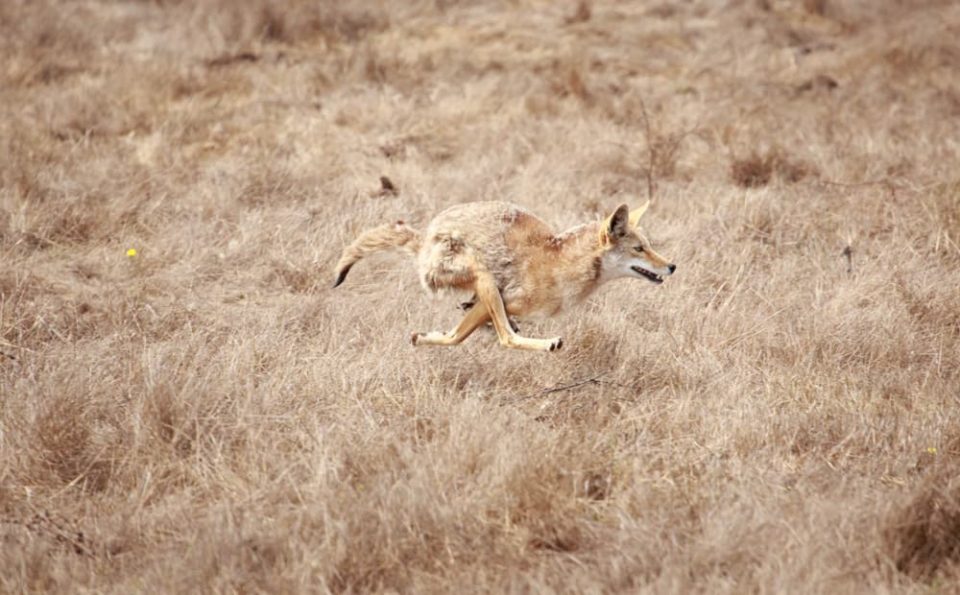
Some coyotes can run up to 40 miles per hour, but not all coyotes studied have reached that speed. It’s hard to measure how fast a coyote can run because there are so many things that affect a coyote’s speed. Like humans, some coyotes are faster than others.
Coyote speed is also difficult to measure in a natural environment. Scientists have tried artificial experiments, like releasing a coyote from a cage, chasing it, and then measuring its speed, but that might not motivate a coyote to run as quickly as it would when chasing down prey or escaping a predator in the wild.
So treat that 40 miles-per-hour number as a good estimate. No matter how you’re measuring, coyotes are fast compared to humans! In one study, even three-legged coyotes reached nearly 23 miles per hour, about as fast as the fastest human sprinter ever recorded.
Learn More
Interested in other animals that live alongside humans? Check out what ladybugs eat or our hedgehog facts for kids!

